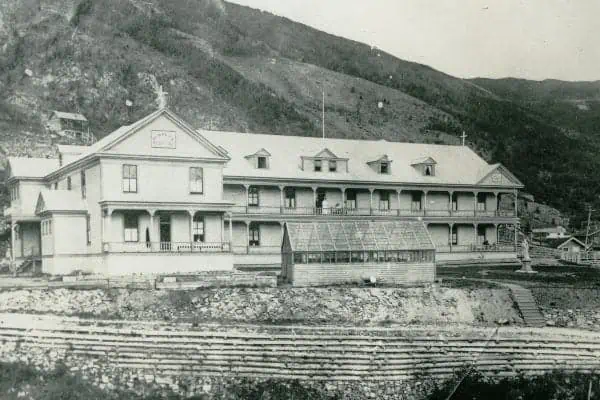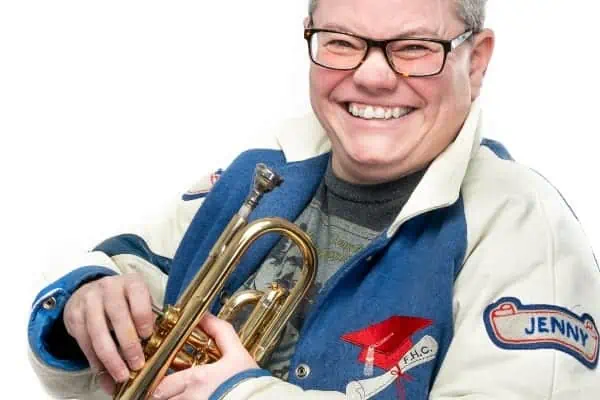For Yukoners who grew up in Dawson City in the 1950s and ’60s, Bear Creek is a symbol of a lost age.
The abandoned mining base about 10 km out of Dawson once served as headquarters and repair yard for the dredges and corporate mining of mid-century, an oft-forgotten time between the romantic age of the gold rush and the nostalgic age of tourism.
“Being born and raised here, I saw Dawson itself at what I call the ‘quiet years’, back in the ’50s and ’60s when all the merchants were leaving and all the buildings were left full of stuff, but empty of humans,” says Greg Hakonson.
“We played in all those buildings. And Bear Creek is really the only place left that even has a hint of that. The machine shop, the engineer’s shop, some of the stuff still sitting where the guys set it down on their last shift.”
Hakonson is the visionary behind Art Gate, a pilot project that brought 12 local and international artists from as far away as Berlin to Bear Creek. From July 12 to 19 they worked to create works that represent Bear Creek.
Some displays featured photographs of the interior of the site, while others brought in metallurgy or carving to evoke the feel of the old mining town.
Hakonson envisioned Art Gate more than a decade ago, around 1999, when the Dawson City Arts Society (DCAS) was created.
“It was back when we were doing all the visioning and strategizing about DCAS, and what it could be, and what it should be,” he says.
At the time, the board members were all too busy to take on something of this scale. Now, with an energetic board and a need for a new project, the time was right.
Though this is the inaugural year of Art Gate, the committee’s long-term hopes are high. The goals of Hakonson and the DCAS are threefold: to raise international awareness of Bear Creek and, through that, revenue for restoration; to raise awareness of DCAS nationally and internationally; and to provide access to resources for artists to move internationally for these projects.
DCAS’s other projects include the Dawson City International Short Film Festival and operating the ODD Gallery in Dawson.
Hakonson says the term “Art Gate” was inspired by the ’90s sci-fi show title, Stargate.
In similar fashion to the fictional wormholes that transported humans across space, DCAS hopes to expand Art Gate into a way for artists to gain the knowledge, accommodation and grants necessary to travel internationally.
The Dawson branch will focus its efforts on Bear Creek, and each participating community will have its own project in a similar vein.
Bear Creek is owned by Parks Canada and is not usually open to the public. However, Hakonson says his long-term relationship with the site as well as the reputation of DCAS helped pave the way for Parks to come on board with the project.
Much credit is also due to the work of the Art Gate committee. Rian Lougheed-Smith, chair of the committee, says Parks was excited about working with DCAS.
In the future, Lougheed-Smith and the rest of the committee hope to attract a larger number of artists create a permanent Bear Creek collection of artwork to be on tour indefinitely.
“Since this is a pilot project, there is a small amount this year,” she says.
“But we haven’t been looking at it numbers-wise.”
She says there are no specific criteria the committee looks for in artists, and that they would not turn interested parties away.
The week-long art frenzy culminated in a one-night-only exhibit at the Yukon School of Visual Arts (SOVA) on July 19. This year the exhibit will only be shown at SOVA, and some artists will be using these pieces in their own future shows.
Philippe LeBlond, a metalworking artist from Whitehorse, is one such participant. He made his artwork out of salvaged material from the dump.
One of his pieces clatters, flashes and whistles as a conveyor belt turns inside a metal box.
“It’s kind of a dredge crossed with a machine shop. I’ve got all these iconic images on the dredge buckets—gold miner, raven, Pierre Berton, Mounties, oil barrels spilling oil—all the things that kind of go along with the mining history,” he says.
“And on the back side, where the conveyor belt comes out, there’s a loonie attached, so every so often a loonie comes out the back just to remind you what the motivation was.”
SOVA doesn’t have a metalworking studio, so LeBlond worked in the facilities at the nearby public school.
“They didn’t really have anywhere else, which is an interesting question. I guess they don’t really have the money, but you have a school of visual arts and there’s no metalworking,” he says.
Fellow artist, Dawsonite Leslie Chapman, agrees that such a facility would be useful in a town with Dawson’s mining history.
“Because it’s about gold and blacksmithing, and that’s why this project resonated for me,” she says.
Chapman and her husband are both miners. Her artwork—jewelry made from small gold shackles to represent the juxtaposition of machinery and goldsmithing—incorporated gold from her own mine.
“I really admired what the machine shop did there at Bear Creek. They created things, they made amazing metalwork, fantastic blacksmithing, machining, engineering—just amazing.
“And in the same time, in the same facility, they melted hundreds of thousands of ounces of gold over the years. So to me, the juxtaposition of the gold metal and the machine shop is very interesting.”
Regardless of the facilities, LeBlond says he’d be willing to come back another year.
“We’ll see where it goes,” he says. “We’ll see what they throw at us next year.”




